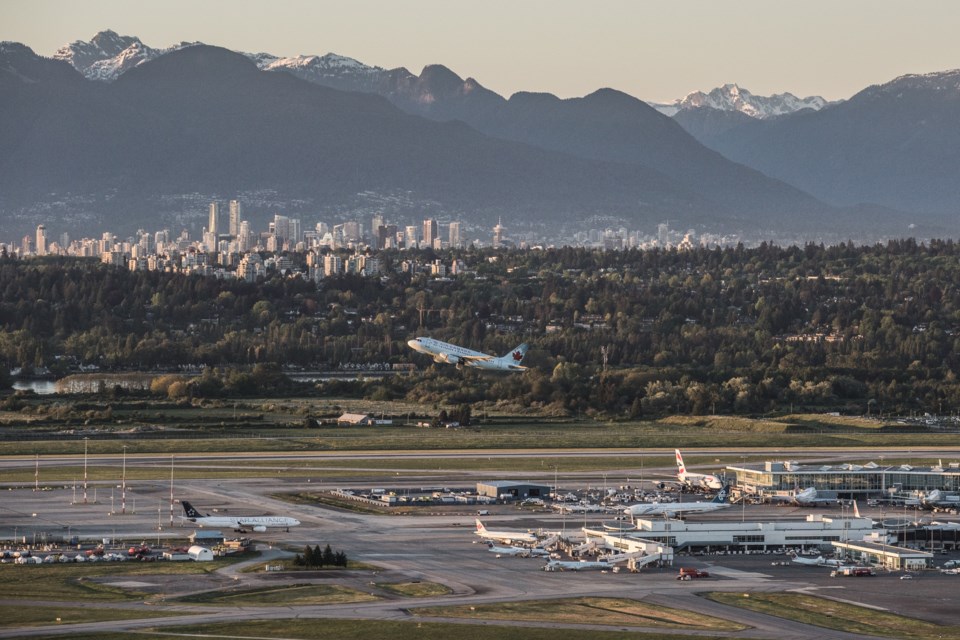While the COVID-19 pandemic has disproportionately affected the aviation industry, Vancouver Airport Authority, the organization that manages Vancouver International Airport (YVR), has recognized the crisis as an opportunity to rethink its operations.
As the airport moves forward in a post-pandemic world, its renewed focus is to become the region’s Gateway to the New Economy—strengthening the core of its operations, organization and finances, and reimagining its role in the economic recovery of our region.
By its nature, YVR is a gateway to and from destinations around the world. But what if the airport was also an access point for learning, for leading innovations in sectors in and outside of aviation, and for engaging with B.C.’s business community in new ways?
This is YVR’s vision for Gateway to the New Economy.
At the core of this vision, YVR is establishing the Innovation Hub @ YVR, a centre for excellence to spur innovation and drive growth across our region. The Innovation Hub @ YVR will allow the airport to look beyond its traditional focus on solutions for passenger processing and broaden it to support and address a wider range of regional challenges.
“As we look to the future in a post-COVID world, we see a real opportunity to drive innovation for the whole region,” YVR’s VP, Innovation and Chief Information Officer Lynette DuJohn explains.
“In many ways, an airport is a city unto itself. People are working and travelling and some are just visiting to experience the amenities we offer. Against this backdrop, we can test and trial new technology for a wide variety of applications, making YVR an ideal proving ground to find solutions for the challenges of today and beyond. And if we can create solutions here, chances are those innovations can be applied at other airports, within our community or even for other industries around the world.”
Designed in the spirit of yə tatəl̕təl̕” [pronounced yuh tah tull tall], which translates to “learning together” in the language spoken by Musqueam, the Innovation Hub @ YVR will leverage partnerships to drive innovation across the region. While it’s still early in the planning phase, a number of partners are already on board to bring the airport’s centre for excellence to life.
This includes building on YVR’s talent agreement with Musqueam to provide training and development opportunities as well as partnering with BCIT to use the airport as a living lab for its Centre for Digital Transformation (C4DT) Internet of Things program. The Internet of Things, or IoT, refers to physical devices that are connected to the internet, collecting and sharing information. Leveraging sensors at YVR will add a layer of digital intelligence to processes and allow for the sharing of real-time data.
“Previously, we were very narrowly focused on the airport experience in terms of innovation. That’s still important to us, but now we’re expanding the idea that innovation is about the region as a whole and is essential to ensuring businesses across B.C. are positioned to thrive.”
This also means keeping the airport’s broader goals top of mind when developing concepts, including generating ideas that will help YVR meet its climate targets and make the airport more accessible for people with disabilities.
Other partnerships under the Innovation Hub @ YVR include Unity Technologies, a leading real-time 3D development creator, and Vancouver-based GeoSim Cities, experts in large-scale precision 3D modelling, who together are developing the airport’s Digital Twin technology.
YVR’s Digital Twin is exactly what it sounds like — a virtual, real-time interactive representation of YVR’s terminal, airfield, and Sea Island Lands—and it will be the digital learning ground for the centre for excellence.
Not only will YVR’s “twin” enable the airport to accelerate its understanding of complex systems, explore hypothetical changes, and enable faster and better decision-making, but it will also help the airport build new partnerships and contribute to the collective economic recovery.
Another key partner is Vanderlande, a global leader in material handling and logistics automation. Vanderlande will be using YVR as its base to develop innovative design-build solutions for the baggage handling systems for use across its worldwide operations.
“What we’ve seen throughout COVID is that the use of technology has accelerated. The airport has historically focused on building new facilities in response to growth, but now is the time to use technology to improve our passengers' experiences, lower our carbon footprint and become more operationally efficient, all through technology and innovation,” DuJohn says. “We’re now focusing more on clicks rather than bricks.”
Innovation Hub @ YVR will kick off in May, with the goal of creating meaningful partnerships and sustainable solutions that will benefit people, the community and the local economy.
“We’re not just an idea incubator. We’re broader than that. We want to see our innovations come to reality,” DuJohn says. “Our success will be measured by people using our innovations in their day to day lives.”
YVR will share more information on the Centre of Excellence in the weeks ahead. Learn more about YVR’s 2021 Strategic Plan and its vision here.



